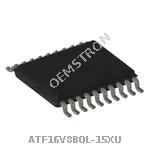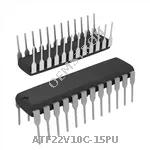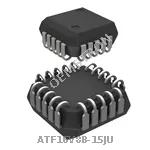Cypress Touchscreen Solutions Include Multi-touch All Point Offering on a Single Chip
"Cypress Semiconductor Corp. has introduced the TrueTouch touchscreen solution based on the PSoC programmable system-on-chip architecture. The TrueTouch offering includes a single-chip touchscreen solution that can interpret up to 10 inputs from all areas of the screen simultaneously. This capability, known as ""multi-touch all point,"" enables designers to create new usage models for products such as mobile handsets, portable media players (PMPs), GPS systems and other products.
Examples of applications well-suited for multi-touch all point functionality include keyboard implementations, inputting multiple locations into a GPS, playing video games on a mobile handset, and making multiple adjustments to sound and/or video settings on a PMP.
In addition to the multi-touch all point products, the TrueTouch family includes devices that perform traditional touchscreen functions including interpreting single touches, and gestures such as tap, double-tap, pan, pinch, scroll, and rotate.
Touchscreens have become the user interface of choice for many applications. Touchscreen technology addresses the conflicting demands for smaller products with larger displays by eliminating traditional buttons without sacrificing screen size. They also enable users to manipulate new functions easily and intuitively by interacting directly with content on the screen. TrueTouch devices support "projected capacitive" touchscreens, which offer numerous benefits over touchscreens based on "resistive" technology. These advantages include optical clarity, durability, reliability and cost-effective implementation of multi-touch features.
"Leading customers in a variety of markets, including smartphones, GPS and PMP devices, have worked with us to help define the TrueTouch family," says Dhwani Vyas, vice president of PSoC products for Cypress. ""We are leveraging our established leadership in the capacitive sensing markets to deliver the next generation of touchscreen solutions that offer user interface designers unparalleled flexibility and integration capabilities via the PSoC architecture."
"Our research clearly indicates that projected capacitive touchscreens for consumer electronics devices are poised for strong growth,"adds Jennifer Colegrove, senior analyst, senior analyst and author of the "Touch Screen" 2008 report at market research firm iSuppli. "The TrueTouch family is targeted squarely at this segment."
Power Management For Embedded Systems
Embedded designers today are facing more and more pressure to increase battery life and at the same time offer more features. One only needs to look at the rapid increase of functionality in mobile handhelds for verification. It has become clear that battery chemistries are not improving at the needed rate to fulfill these requirements. This places the pressure squarely on silicon vendors to deliver better performance at lower power. As if this dilemma wasn't challenging enough, designers face strict time to market requirements posed by shrinking design cycles.
Moreover, green movements are requesting a reduction in battery waste, which translates to embedded systems that require fewer battery changes. There are also government regulations (Example: Energy Star) across the globe to reduce stand-by current in appliances. The next generation of embedded systems is going to need extremely low active and sleep power consumption while simultaneously increasing the amount of flexibility and programmability needed to meet time-to-market requirements.
Apart from lower current consumption, there is also a need to lower system voltage. A few years ago, the standard for minimum operating voltage was 3.3V. Today, it is 1.8V. Charting this trend, it is realistic to extend this trend into the sub-volt range for tomorrow's devices. This opens up the ability to build Psoc-based designs with a single AA battery (whose end of life voltage is around 0.9V). Although some Psoc-based designs can run at 1.8V today, quite often the analog performance degrades with such low voltages. For handheld battery powered designs that require good analog performance, systems that can run at below 1 volt voltage and still meet the analog performance requirements, offer the ability to move to a single AA battery. This translates to lower cost to the consumer and fewer batteries.



Comments
Post a Comment